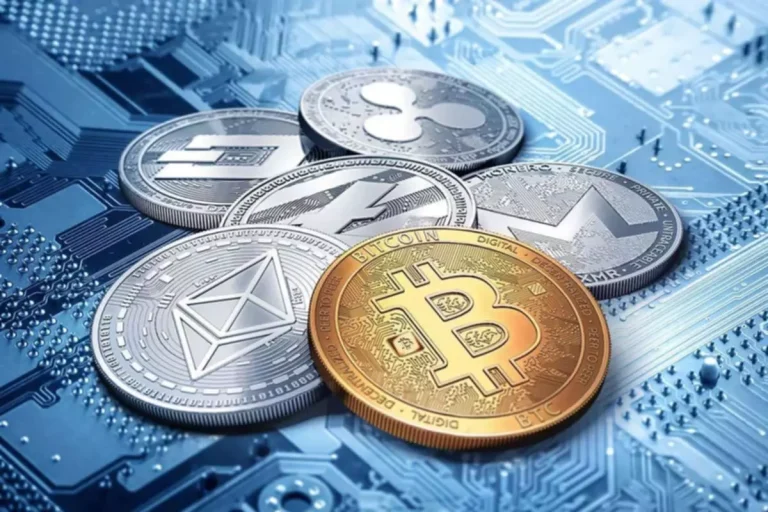Mean-reverting Costs And Losses In Liquidity Pools Ieee Convention Publication
These can later be redeemed for the original property, together with any rewards earned. Liquidity providers have plenty of opportunities, due to DEX incentives that enable methods like liquidity mining whereas mitigating risks corresponding to impermanent loss. Providers also can customise bid and ask costs in liquidity swimming pools utilizing particular formulas. Liquidity provisioning is crucial for market making in crypto and DeFi markets.
With AMMs, the necessity for a direct counterparty to execute each change was eradicated because of the introduction of DeFi liquidity pools that facilitate around-the-clock buying and selling. This was a significant improvement because it helped convey an increased stage of liquidity for some tokens that are otherwise highly illiquid on change order books. Order books are the principle technique of governing trade in conventional markets. They characterize lists of orders made by market participants who want to purchase or commerce assets at particular costs, which regularly differ from current prices. Creating orders will increase liquidity whereas executing them, and taking property out of the market lowers it. Our network helps you forge collaborations with other projects, exchanges, or AMMs, resulting in shared liquidity swimming pools or joint advertising initiatives.
Order books rely on market makers to offer liquidity and decide costs through trading. DeFi exchanges characteristic pre-funded pools where asset prices are ruled by algorithms. To compensate for impermanent loss, DEXes reward liquidity providers liquidity pool meaning with a share of trading fees. Liquidity providers earn passive revenue from these charges, that are distributed based mostly on their deposited funds and LP token holdings. Each commerce on a DEX incurs a transaction fee, which is then shared with liquidity suppliers.
Why Do Merchants Benefit From Liquidity Pools Explained By Market Experts?
Liquidity swimming pools may additionally be used for governance, the place users pool together their funds to vote for a typical cause relating to a protocol’s governance proposals. Another instance is liquidity mining or yield farming, where users provide liquidity to a DEX to generate yield as freshly minted tokens. They are also important for blockchain-based gaming, on-chain insurance in opposition to smart contract dangers, and collateralizing minting synthetic belongings. Participants contribute to a shared pool by depositing funds, which facilitates buying and selling, lending, and other monetary activities. This mechanism enhances market liquidity, reduces slippage, and permits for efficient value discovery.
Impermanent Loss In Defi: The Whole Guide
Add some collateral to a liquidity pool, connect it to a trusted oracle, and you’ve obtained yourself an artificial token that’s pegged to whatever asset you’d like. Alright, in actuality, it’s a more complicated drawback than that, but the primary concept is this straightforward. It’s an idea borrowed from conventional finance that includes dividing up monetary products primarily based on their risks and returns. As you’d expect, these products permit LPs to pick personalized risk and return profiles.
Fees are distributed according to the proportion of liquidity that each supplier has contributed to the pool. The extra liquidity a supplier contributes, the bigger the proportion of the fees they obtain. Anyways, as you buy increasingly more Proof of personhood BAT from the pool, by giving it ETH, it’ll slowly raise the worth that you’re paying for each BAT. This may be very inefficient as a end result of you have to set a price that another person is keen to buy—at least if you would like to promote your inventory or buy a inventory immediately. Get a head begin on how to correctly choose your liquidity deployment methodology with our guide. Keyrock supports token launches with enough liquidity to attract traders.
Risky Price Change
Additionally, smart contract vulnerabilities, hacking dangers, and sudden adjustments in market conditions can expose liquidity providers to potential financial losses. Furthermore, DeFi liquidity pools have facilitated the creation of innovative financial devices, such as decentralized exchanges and lending protocols. These protocols rely on the liquidity the pools present to allow peer-to-peer buying and selling and lending, lowering reliance on conventional intermediaries and enhancing efficiency.
Before we go any further https://www.xcritical.com/, it’s value noting that there are DEXes that work just fine with on-chain order books. Binance DEX is built on BNB Chain, and it’s specifically designed for fast and low-cost buying and selling. This signifies that on a blockchain like Ethereum, an on-chain order guide exchange is practically impossible. You may use sidechains or layer-two solutions, and these are on the means in which. However, the community isn’t able to handle the throughput in its current form. One of the core applied sciences behind all these products is the liquidity pool.
- But many other onchain liquidity provisioning options exist, and choosing where to deploy liquidity is dependent upon several factors that we’ll explore.
- These pools democratize access to monetary markets by allowing anyone to take part, no matter their financial background or geographic location.
- DeFi is the host of a number of different liquidity options which may be roughly popular and match particular investor and token issuer profiles.
- This article will inform you about liquidity pools, how they work, and several different things you should learn about them.
When you’re shopping for the most recent food coin on Uniswap, there isn’t a seller on the opposite facet in the conventional sense. Instead, your exercise is managed by the algorithm that governs what occurs in the pool. In addition, pricing can be decided by this algorithm based on the trades that occur within the pool. Even so, since much of the belongings in the crypto area are on Ethereum, you can’t trade them on other networks unless you utilize some kind of cross-chain bridge.
It is a cornerstone of DeFi since it offers a source of liquidity for users to exchange and interact with various digital assets. Another key side of liquidity swimming pools that many decentralized exchanges make use of to attract participants is incentive mechanisms. When DeFi users carry out trades, they pay a charge, which is proportionately cut up amongst liquidity suppliers based on their stake within the pool. Liquidity swimming pools fix this drawback by allowing trades to occur regardless of whether or not there is a dealer with a matching value on the other end. The funds in a pool are readily available, whereas a wise contract algorithm governs them and controls the worth.
Note that this overview doesn’t cowl DEX aggregators, derivatives platforms or perpetual markets. There are additionally AMMs with barely more complex variations on the constant product formula, such because the one utilized in some Balancer pools. This helps reduce value slippage and reduces trades’ impression on asset costs more than the fixed sum. This innovation means no more complicated algorithms, nevertheless it requires cautious management to keep away from losses. In DeFi, liquidity swimming pools take this a step further, utilizing good contracts to deal with liquidity automatically.
153 total views, 5 today



